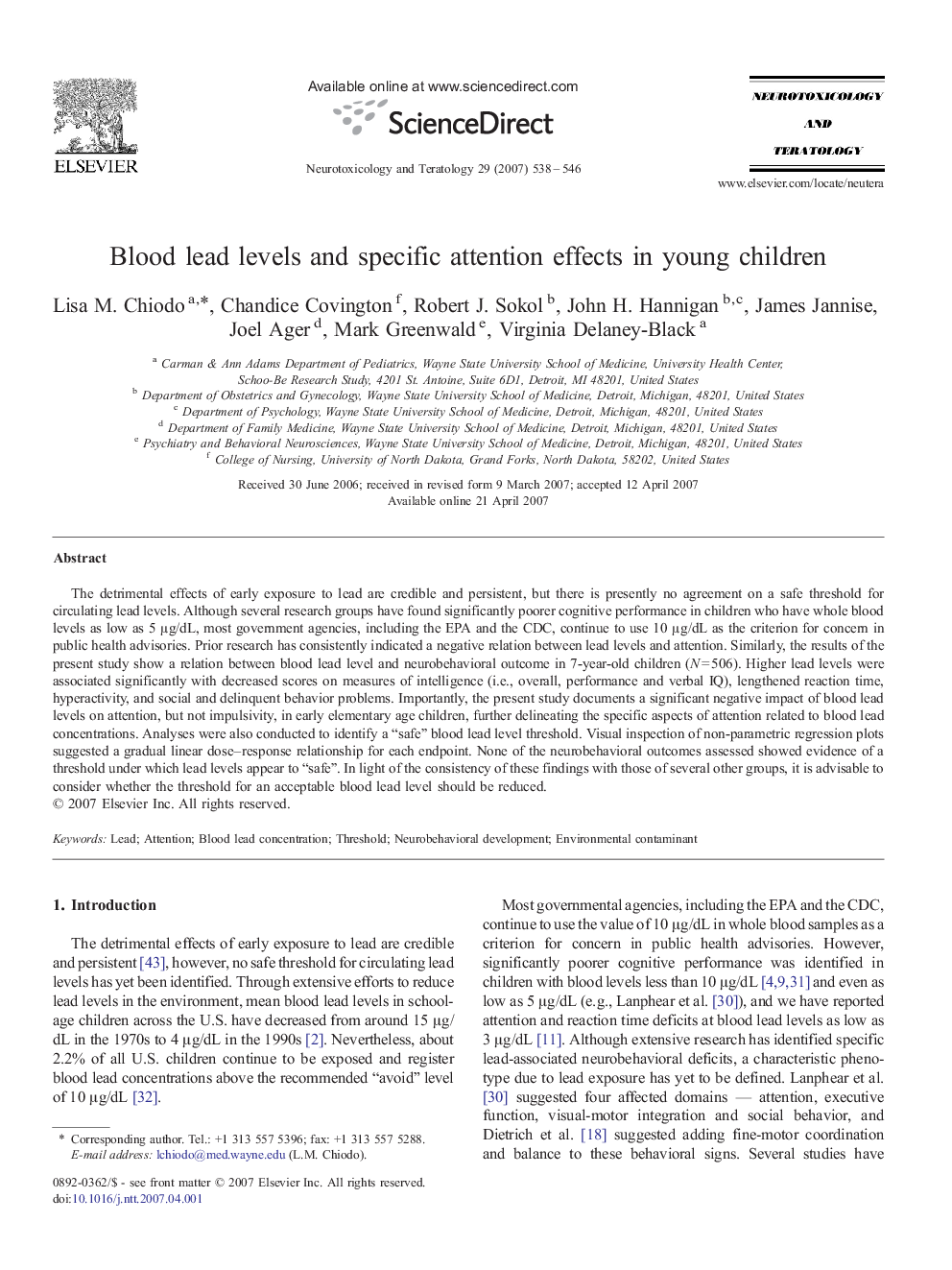| Article ID | Journal | Published Year | Pages | File Type |
|---|---|---|---|---|
| 2591953 | Neurotoxicology and Teratology | 2007 | 9 Pages |
The detrimental effects of early exposure to lead are credible and persistent, but there is presently no agreement on a safe threshold for circulating lead levels. Although several research groups have found significantly poorer cognitive performance in children who have whole blood levels as low as 5 μg/dL, most government agencies, including the EPA and the CDC, continue to use 10 μg/dL as the criterion for concern in public health advisories. Prior research has consistently indicated a negative relation between lead levels and attention. Similarly, the results of the present study show a relation between blood lead level and neurobehavioral outcome in 7-year-old children (N = 506). Higher lead levels were associated significantly with decreased scores on measures of intelligence (i.e., overall, performance and verbal IQ), lengthened reaction time, hyperactivity, and social and delinquent behavior problems. Importantly, the present study documents a significant negative impact of blood lead levels on attention, but not impulsivity, in early elementary age children, further delineating the specific aspects of attention related to blood lead concentrations. Analyses were also conducted to identify a “safe” blood lead level threshold. Visual inspection of non-parametric regression plots suggested a gradual linear dose–response relationship for each endpoint. None of the neurobehavioral outcomes assessed showed evidence of a threshold under which lead levels appear to “safe”. In light of the consistency of these findings with those of several other groups, it is advisable to consider whether the threshold for an acceptable blood lead level should be reduced.
